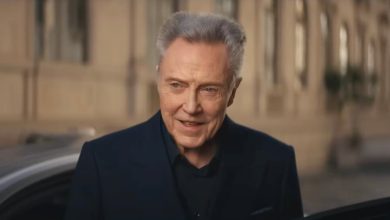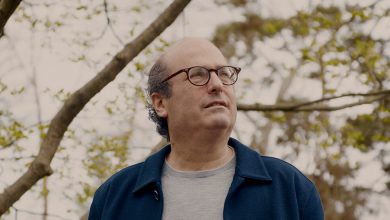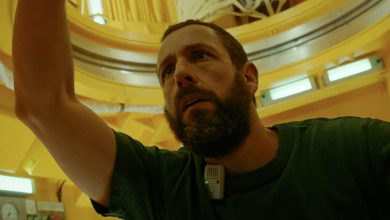Review: ‘The Hours’ Will Bring Renée Fleming Back to the Met

PHILADELPHIA — Three women are left alone onstage.
The orchestra is low as they begin to sing. Their voices (two soprano, one mezzo-soprano) gradually swell and intertwine in a radiant, aching trio about all that separates them from one another — and their essential union.
This is, famously, the ending of Strauss’s “Der Rosenkavalier,” which five years ago was the last work the superstar soprano Renée Fleming sang at the Metropolitan Opera. But her performance, a farewell to the canonical repertory, did not mark a full retirement. Fleming said she would continue to concertize, and left open the possibility of returning to staged opera for new pieces written with her in mind.
So on Friday here in Philadelphia, it felt like a moving nod to her distinguished career that a radiant, aching trio of women (two sopranos, one mezzo) left alone onstage — a trio about all that separates them from one another, and their essential union — is also the coda to “The Hours,” which will bring Fleming, for whom it was composed, back to the Met this fall.
There the work, Kevin Puts’s new adaptation of the 1998 novel and 2002 film about the reverberations of Virginia Woolf’s “Mrs. Dalloway” in the lives of three characters in different places and eras, will be conducted by the company’s music director, Yannick Nézet-Séguin. And on Friday, at the Kimmel Center, Nézet-Séguin led its world premiere in a concert presentation with another ensemble he leads, the Philadelphia Orchestra.
With a libretto by Greg Pierce, “The Hours” is even prettier and more sumptuous than “Silent Night,” a grandly scored yet sweetly humble opera about a cease-fire over Christmas during World War I, for which Puts won a Pulitzer Prize in 2012. The new work is, like “Silent Night,” direct, effective theater, with a cinematic quality in its plush, propulsive underscoring, its instinctive sense for using music to move things along. For all its shifts and overlaps of time and place, it’s an entirely clear piece, its sound world never too busy or difficult — never too interesting, perhaps — to muddy the waters.
Fleming has the role Meryl Streep played in Stephen Daldry’s film: Clarissa Vaughan, a prosperous book editor in late 1990s New York City who is preparing a party for her friend, a famous poet dying of AIDS. She suffers regrets and despair, as do other two women: Laura Brown (the acclaimed Broadway soprano Kelli O’Hara), a Los Angeles housewife in 1949; and Woolf herself (the mezzo Jennifer Johnson Cano on Friday, but Joyce DiDonato at the Met) in a London suburb, trying to surmount her depression long enough to write “Mrs. Dalloway” in the early 1920s.
In Michael Cunningham’s delicate novel, these three are linked in a carefully wrought knit of Woolfian prose and coincidences, among them that Clarissa Vaughan shares a first name with the title character of “Mrs. Dalloway,” who in Woolf’s novel — which Laura Brown is reading as she fights anomie and the urge toward suicide — is also making a party.
The film version is far more lugubrious, not least in Philip Glass’s melodramatically undulating score, which so defines the movie’s mood — its dusky, urgent strings inseparable from Nicole Kidman’s Woolf and her puttied aquiline nose striding off to drown themselves — that there is something brave in another composer taking on this material.
Puts has gotten from Glass’s Minimalism a taste for using repeated figurations as a kind of sonic carpeting, but his repetitions are much less insistent. The opera begins in a watery blur, with a choir, sounding simultaneously floating and precise, chanting fragments of Woolf’s classic opening line: “Mrs. Dalloway said she would buy the flowers herself.”
The events of the opera, as in the book and film, are studiedly modest, taking place in a single day. Clarissa goes to the florist, visits her dying friend, and muses on what her life would have been like had she not, years ago, broken off a budding romance with him. Woolf chats with her husband about page proofs, forms phrases and greets her sister’s family. Laura attempts to bake a cake for her husband’s birthday before escaping to a hotel to read alone.
With each of the two acts unfolding in an unbroken stream, Puts moves smoothly between parlando sung conversation and glowing lyrical flights. The stylization of opera allows him to bring his characters together in the same musical space, even if they are otherwise unaware of one another. So there are, for example, ravishing duets for Woolf and Laura, one in which they sing lines from “Mrs. Dalloway” in close harmony over trembling strings. Puts is acute in using the chorus, which will presumably be offstage in a full production, to convey further shadows of these women’s interior lives.
Prepared with remarkably limited rehearsal time for a two-hour work with a substantial cast, this was a lush yet transparent account of the score, performed with polish and commitment. The opera leans heavily on this orchestra’s storied opulent strings, as well as on its characterful winds and brasses, and precision at a large battery of percussion instruments (including a celesta, used frequently, in a cliché of dreaminess).
Puts’s work is attractive and skillful. Yet much of it, despite lots of activity and ostensible variety in the orchestra and among the singers, gives a sense of engulfing sameness of musical texture and vocal approach. The arias, if you set the words aside, are more or less interchangeable: pristinely soaring. The saturated orchestral colors recall Nelson Riddle’s symphonic pop arrangements and Samuel Barber’s gently reflective soprano monologue “Knoxville: Summer of 1915.” But Riddle songs are just a couple of minutes long; “Knoxville,” about 15. Over a couple of hours, it’s lovely but wearying.
The ’50s style for Laura’s world — mild Lawrence Welk-type swing, choral writing like TV jingles — feels obvious. And some moments of highest drama smack of the overkill that mars the film, as when the threat of Woolf’s devastating headaches is marked by pummeling darkness, yawning brasses and instrumental screams.
New fantasy sequences, demarcated in concert with sudden shifts of lighting, telegraph a bit too crudely how much these women want to run from their lives. Woolf’s imaginary interaction with a contemporary male novelist who speaks about how much she’s meant to him — an invention of the libretto — is cloying and overwrought, drenched in bells.
The more intimate and understated, the better for Puts’s music, and the cast embodies both those qualities. Cano sings with mellow sobriety — and, in Woolf’s darkest moments, stricken intensity. O’Hara’s voice is silvery at the top and full in the middle, her pain registering gracefully.
As Clarissa’s poet friend, Richard, the baritone Brett Polegato sang with lightly sardonic airiness. The tenor William Burden sounded shining and eager as his old lover, Louis. The tenor Jamez McCorkle, the mezzo Deborah Nansteel and the bass-baritone Brandon Cedel were steady, sonorous presences as the main characters’ much put-upon romantic partners.
Fleming began with some paleness of tone, but grew in command through the evening, past her characteristic propriety to a kind of somber nobility. Clarissa dominates the opera’s final scenes, when “The Hours” is at its finest: the emotions sincere and persuasive, the music fervent.
And at the end, the three women come together, perceiving one another in a way they cannot in the novel or film and arriving at a simple moral: “Here is the world and you live in it, and you try.” There was poignancy in having a great diva, now 63, singing the nostalgic leading role, a woman taking in all she has done — and realizing she still has more to give.
The Hours
Performed at the Kimmel Center, Philadelphia.





